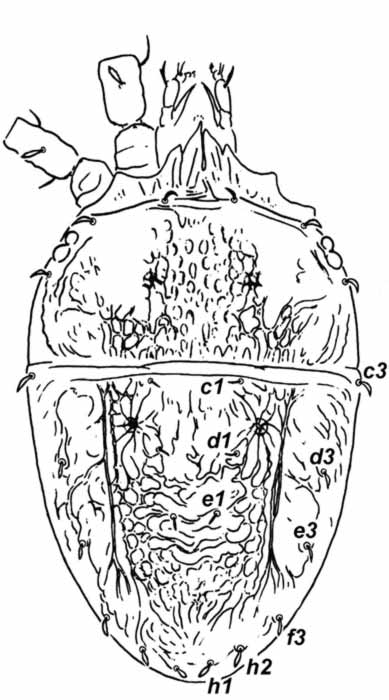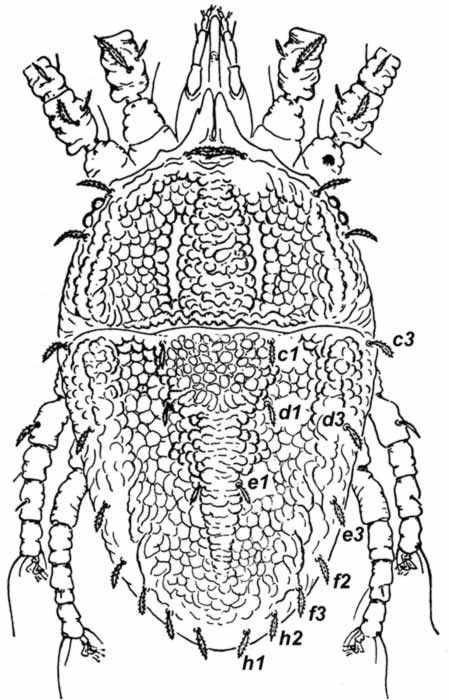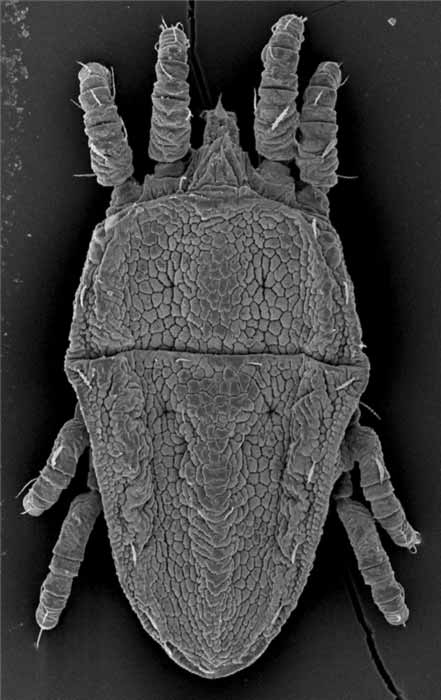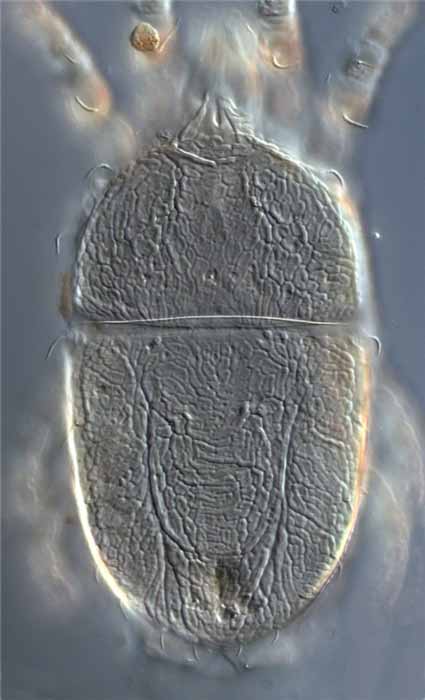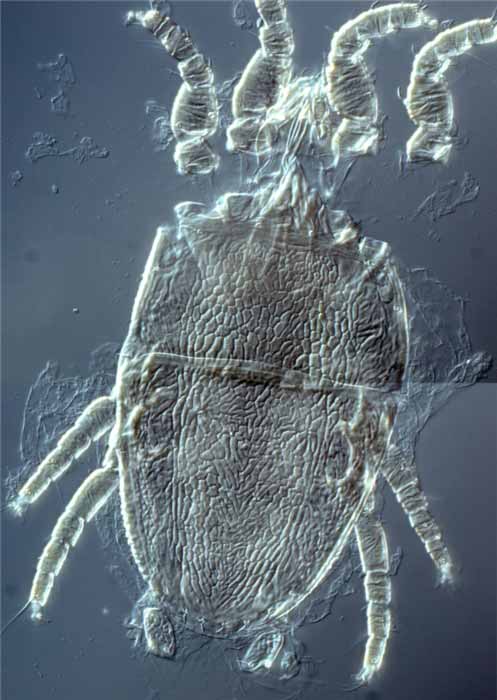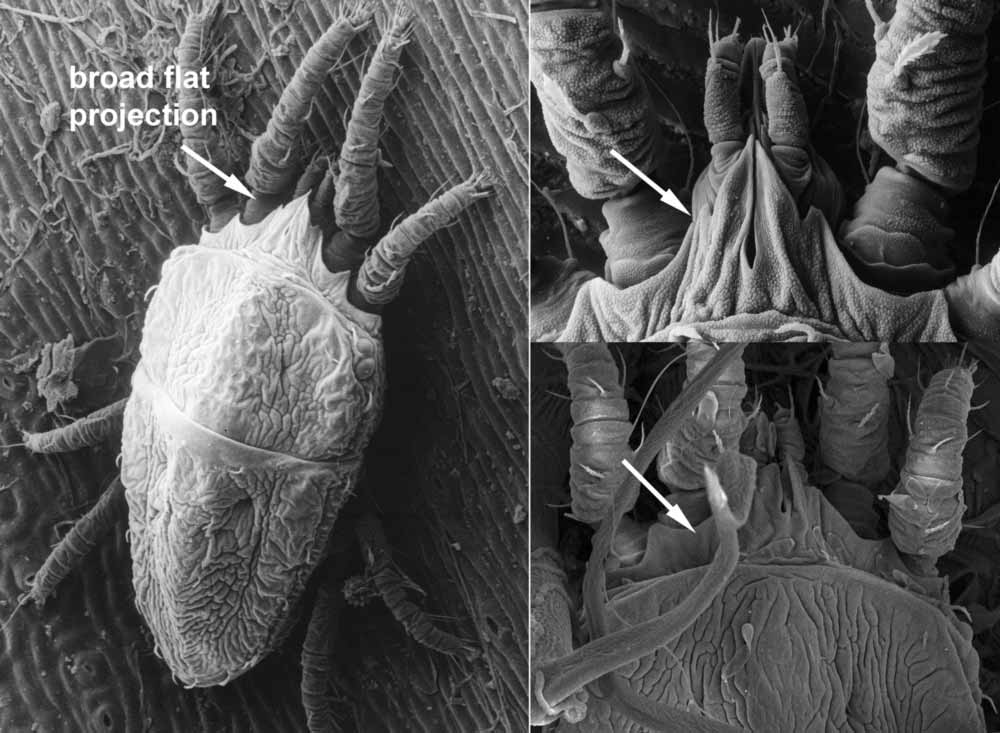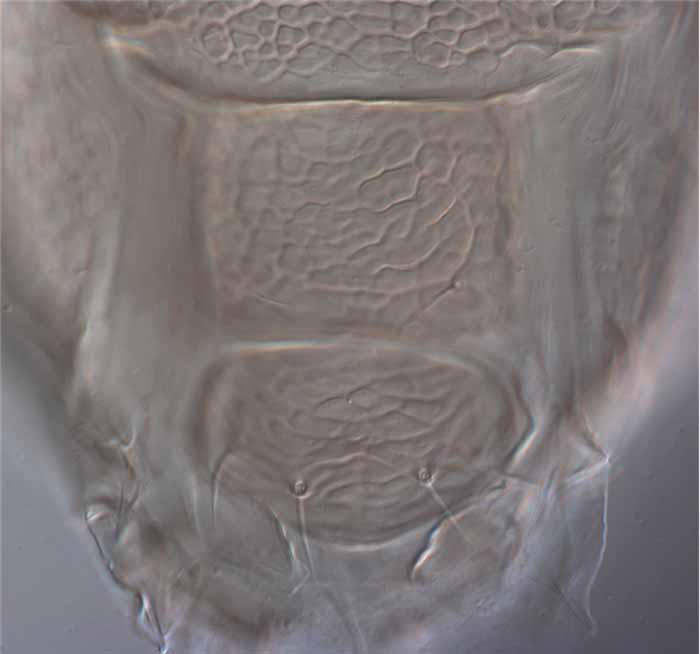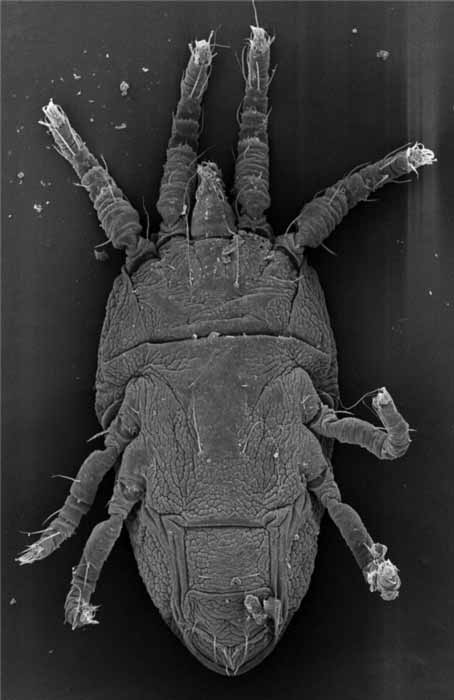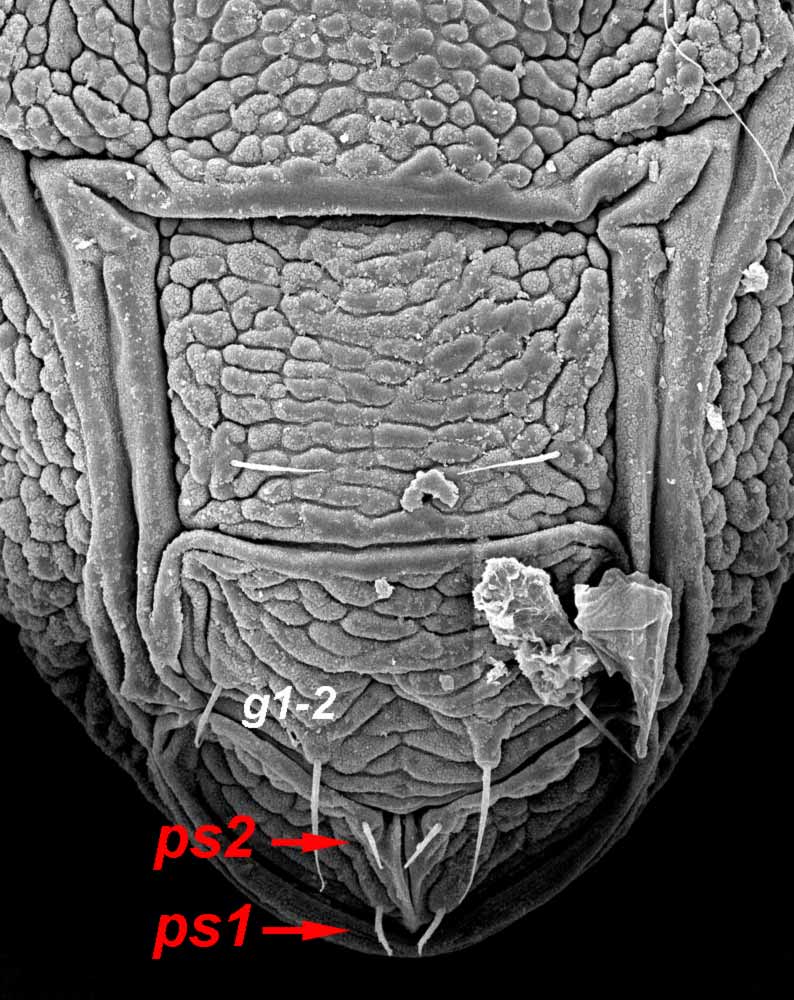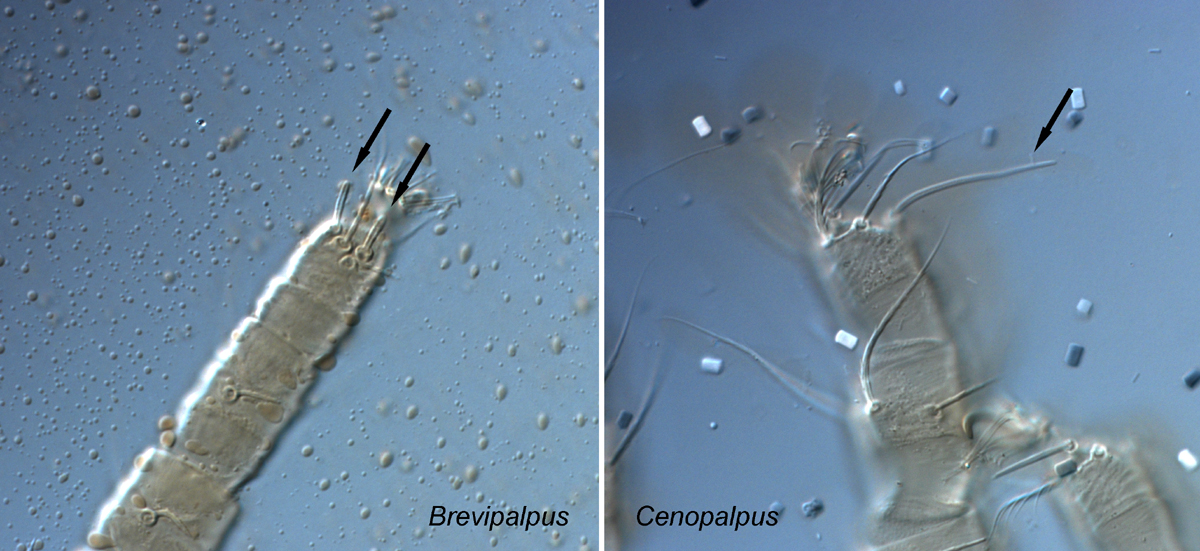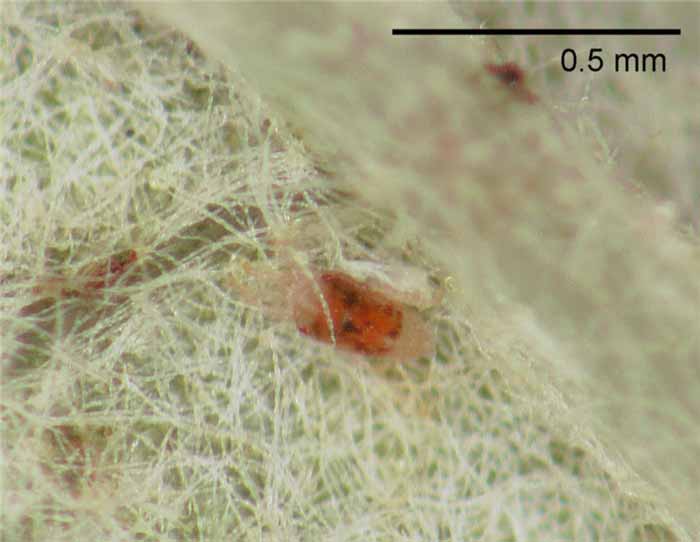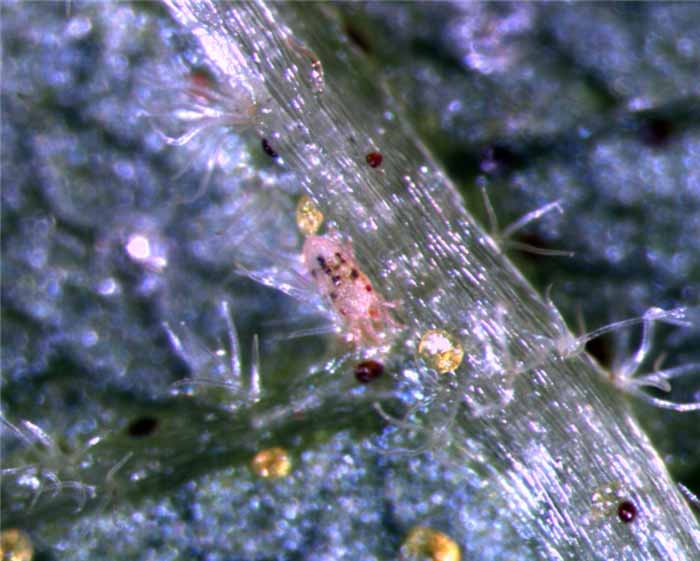Brevipalpus
|
Fig. 1. Brevipalpus phoenicis sensu lato female dorsum (after Baker & Tuttle 1987). |
|
Fig. 2. Brevipalpus colpodes female dorsum (after Pritchard & Baker 1958). |
|
Fig. 3. Brevipalpus chilensis female dorsum (image: Gary Bauchan, USDA-ARS). |
|
Fig. 4. Brevipalpus sp. female dorsum. |
|
Fig. 5. Brevipalpus sp. female dorsum. |
|
Fig. 6. Brevipalpus adult female dorsum, indicating broad flat projection on anterior margin of prodorsum (images: Eric Erbe, USDA). |
|
Fig. 7. Brevipalpus sp. female venter - detail of ventral and genital plates. |
|
Fig. 8. Brevipalpus chilensis female venter (image: Gary Bauchan, USDA-ARS). |
|
Fig. 9. Brevipalpus chilensis female venter - ventral & genital plates (image: Gary Bauchan, USDA-ARS). |
|
Fig. 10. Solenidion on tarsus I-II of Brevipalpus (short, rod-like) and Cenopalpus (long, slender) (indicated by arrows). |
|
Fig. 11. Brevipalpus sp. female live. |
|
Fig. 12. Brevipalpus sp. female live. |
Key characters
- c2, d2, e2 absent (Figs. 1-2)
- f2 present or absent; when present inserted in lateral position (Fig. 2)
- h2
- not elongate
- many species with short dorsal setae, subequal in length (Figs. 1-5)
- anterior margin of prodorsum with broad flat projection extending over coxae I-II and base of gnathosoma (Figs. 1, 6)
- ventral, genital and anal plates well developed (Figs. 7-9)
- 2 pairs ps setae (Fig. 9)
- 4 segmented palp
- solenidia on tarsus I-II short, rod-like (Fig. 10)
- deutonymphal dorsal setae differ in shape to those of adult (often diagnostically significant)
Similar taxa
Cenopalpus - c2 present; solenidia on tarsi I-II long, slender (Fig. 10); with distinctive ventral plate, delimited by pattern in cuticle
Amblypalpus - no setae in f-series present; ventral and genital plates not developed
Number of species
over 300
Authority
Donnadieu
Distribution
World wide.
By far the most species are recorded from Neotropical region ~129 spp.), followed by Nearctic (~69 spp.) and Oriental (~49 spp.) regions.
Species rich countries include: China, Greece, Italy, Mexico, Pakistan, USA
Hosts
- usually red, orange, brown in colour when alive (Figs. 11-12)
- often with dark markings dorsally
- eggs red
Colour
- usually red, orange, brown in colour when alive (Figs. 11-12)
- often with dark markings dorsally
- eggs red
Remarks
The dorsal setae of the deutonymphal differ in shape to those of adult and these differences can be of significance for species separation.

